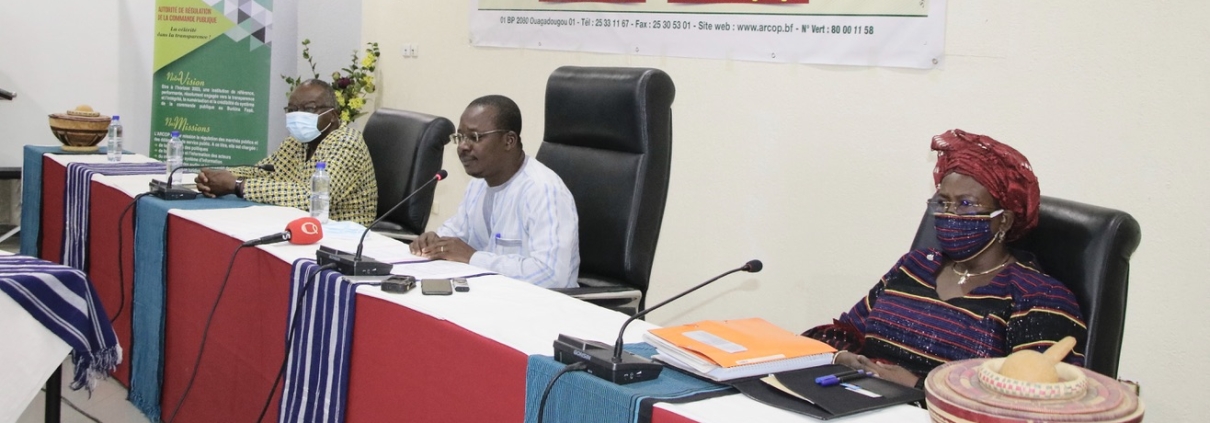Burkina Procurement Reform Anchors Fiscal Credibility
Burkina Faso’s procurement reform tightens fiscal credibility as WAEMU yields compress and XAUUSD=X stability underpins revenue resilience amid euro-peg dynamics transmitted through EURUSD=X and regional funding conditions.

Burkina Faso’s rollout of a nationwide training programme under its new public procurement code marks a structural step toward fiscal discipline and institutional credibility within the West African Economic and Monetary Union (WAEMU). The initiative, aligned with the bloc’s fiscal convergence framework, aims to enhance efficiency and transparency in the execution of public spending at a time when macroeconomic conditions demand tighter control over capital formation.
According to the IMF’s October 2025 outlook, Burkina Faso’s economy is forecast to expand by 4.0% in 2025, following 3.8% in 2024, with inflation moderating to around 2.5% from 3.6%. Public debt remains contained near 52% of GDP, a level consistent with the regional average and well below the 70% ceiling established by WAEMU’s stability pact.
Procurement reform is now a fiscal transmission mechanism rather than an administrative exercise. By digitising tender processes, enforcing competitive bidding, and setting enforceable compliance thresholds, the government seeks to reduce bid dispersion, limit cost overruns, and improve project delivery timelines. These measures can strengthen the fiscal multiplier—generating more infrastructure output per franc of expenditure—without widening the deficit, which is projected to narrow toward 3.2% of GDP by end-2026. With the CFA franc fixed at 655.957 per euro, macro adjustment occurs through credibility rather than currency movement. Reduced governance risk compresses risk premia in regional debt markets and stabilises cash-flow expectations for contractors, supporting smoother disbursement cycles and fewer arrears.
Regional capital-market signals confirm early investor receptivity. Average yields on WAEMU sovereign securities, including Burkina Faso’s latest multi-tranche issues, have ranged between 6.8% and 7.8% in 2025, down from a peak of nearly 8.5% in mid-2024. This 70-basis-point compression reflects improved investor confidence amid credible fiscal consolidation. In a context where monetary policy remains moderately restrictive—the BCEAO’s main policy rate is still at 3.5%—Burkina Faso’s credibility premium functions as its key lever for lowering borrowing costs. Narrower spreads versus French OATs and higher auction cover ratios suggest that governance and process transparency are becoming determinants of yield differentiation across WAEMU sovereigns.
The country’s exposure to gold (XAUUSD=X) remains both an opportunity and a structural vulnerability. Gold exports represent about 75% of foreign-exchange earnings, linking fiscal outcomes to commodity cycles. A sustained recovery in gold above USD 2,200 per ounce in 2025 would strengthen mining royalties and buffer external balances, while a reversal would constrain revenue and raise refinancing pressure. Procurement discipline mitigates this risk by reducing wastage and stabilising expenditure efficiency, insulating capital spending from cyclical revenue swings. It also improves private-sector liquidity: prompt settlement of certified invoices lowers contractors’ working-capital needs and stabilises employment in the construction and logistics sectors, which collectively account for roughly 9% of formal employment.
Burkina Faso’s programme mirrors regional trends. Côte d’Ivoire and Senegal achieved notable procurement savings after introducing e-procurement between 2021 and 2024, cutting average project cost overruns by 10–15%. As WAEMU harmonises procurement oversight under its convergence agenda, Burkina Faso’s integration of digital audit trails and uniform tender standards positions it for improved donor alignment and concessional funding access. The efficiency gains also feed directly into credit risk metrics. More predictable expenditure execution reduces primary deficit volatility, a key signal for bondholders assessing the durability of fiscal consolidation in low-income frontier markets.
Risks remain visible. Capacity gaps between central and municipal entities could slow uniform implementation, while persistent security challenges may delay project mobilisation in northern provinces. Commodity concentration adds macro asymmetry; a 10% fall in XAUUSD=X could widen the deficit by roughly 0.3% of GDP if unmitigated. External shocks transmitted through EURUSD=X movements could raise import costs and increase the domestic inflation pass-through, potentially limiting fiscal flexibility despite procurement improvements.
Over the next 12 months, three indicators will measure traction: first, the competitive-tender share of total contract value sustaining above 60%; second, the average procurement cycle time falling by at least 20% from the 2024 baseline of roughly 180 days; and third, WAEMU-auction yields narrowing further by 50–75 basis points without compressing capital expenditure. If these benchmarks hold while the fiscal deficit converges to the 3% threshold by 2026, Burkina Faso will have demonstrated that governance reform, not monetary stimulus, remains the most credible path to reducing sovereign risk and anchoring long-term investment confidence within the union.





